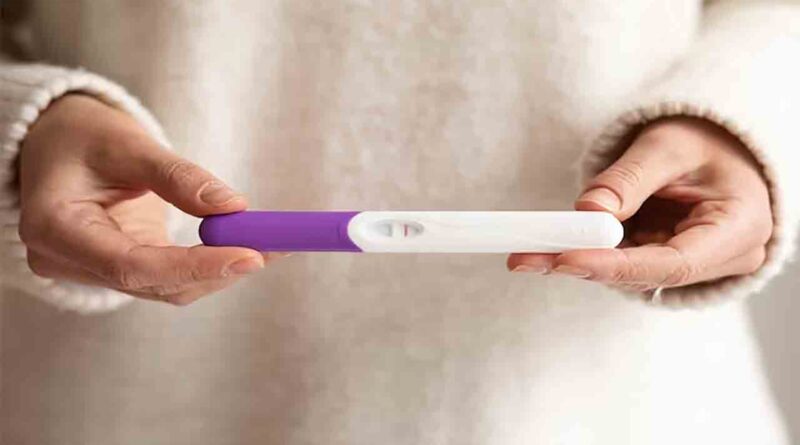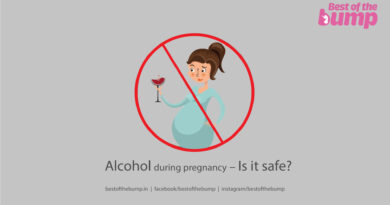False Positive Pregnancy Tests: Possible causes
In this comprehensive guide, we will delve into the world of false positive pregnancy tests. We’ll explore the possible causes, the science behind these deceptive results, and how to navigate the emotional rollercoaster that often accompanies such an experience. Whether you’re actively trying to conceive or simply curious about the intricacies of pregnancy testing, this article will provide you with valuable insights.
A positive pregnancy test is often met with a whirlwind of emotions – joy, excitement, and perhaps a touch of anxiety. For many women, that positive result on a pregnancy test is the realization of a long-cherished dream. However, what happens when the test result is positive, but pregnancy isn’t the cause? This is a phenomenon known as a false-positive pregnancy test, and it can be perplexing and distressing for those who experience it.
Understanding Pregnancy Tests
Before delving into the complexities of false-positive pregnancy tests, it’s essential to grasp the fundamentals of pregnancy testing. Pregnancy tests work by detecting the presence of human chorionic gonadotropin (hCG) hormone in a woman’s urine or blood.
What Is a False Positive Pregnancy Tests?
False Positive Pregnancy Tests is a situation in which a pregnancy test incorrectly indicates that a person is pregnant when, in fact, they are not. It’s a result that can be both surprising and emotionally challenging for those who experience it. To understand false-positive pregnancy tests better, it’s essential to know how pregnancy tests work and why these misleading results can occur.
How do Pregnancy Tests work?
Pregnancy tests are designed to detect the presence of a hormone called human chorionic gonadotropin (hCG) in a person’s urine or blood. hCG is produced by the developing placenta shortly after a fertilized egg attaches to the uterine lining. Its primary function is to support the corpus luteum, a temporary endocrine structure in the ovaries that helps maintain the uterine lining during early pregnancy.
There are two main types of pregnancy tests:
- Urine Pregnancy Tests: These are the most common type of pregnancy tests and are typically available over-the-counter at drugstores. They are convenient and easy to use, making them a popular choice for at-home testing.
- Blood Pregnancy Tests: Blood tests for hCG can be conducted in a healthcare setting. They are more sensitive and can detect pregnancy earlier than urine tests.
Why do False Positive Pregnancy Tests Occur?
False positive pregnancy tests can happen for several reasons, and they are not necessarily indicative of an underlying health problem. Here are some common causes:
- Medications: Certain medications, including fertility drugs and medications that contain hCG, can lead to false-positive results. For example, fertility treatments like hCG injections can temporarily elevate hCG levels in the body.
- Medical Conditions: Some medical conditions, such as certain types of cancer (e.g., ovarian or testicular cancer), pituitary gland disorders, and rare gynecological conditions, can produce hCG or hCG-like substances, leading to misleading test results.
- Evaporation Lines: Over time, some urine tests can develop evaporation lines, which may appear as faint positive lines after the recommended testing time. These lines are not actual positives but can be misinterpreted as such.
- Expired or Defective Tests: Using an expired or defective pregnancy test can yield inaccurate results. It’s crucial to check the expiration date on the test kit and follow the instructions carefully.
- Chemical Pregnancy: In some cases, a chemical pregnancy, which is an early pregnancy loss shortly after implantation, can lead to a positive test result. However, this pregnancy does not progress and often results in a subsequent negative test.
- User Error: Incorrectly taking a pregnancy test, such as misinterpreting the instructions, not following the recommended testing time, or using too diluted urine, can result in false-positive outcomes.
Possible Causes of False Positive Pregnancy Tests
False positive pregnancy tests are relatively rare but can occur due to a variety of reasons. Pregnancy tests work by detecting the presence of the hormone human chorionic gonadotropin (hCG) in a woman’s urine or blood. Here are some possible causes of false-positive pregnancy tests:
- Medications: Some medications, such as fertility drugs and certain medications used to treat infertility, can contain hCG or substances that mimic hCG, leading to a false-positive result.
- Chemical Pregnancy: In some cases, a fertilized egg may implant in the uterus but fail to develop further, resulting in a very early miscarriage called a chemical pregnancy. This can cause a transient rise in hCG levels, leading to a false-positive pregnancy test result.
- Recent Miscarriage or Abortion: After a miscarriage or abortion, hCG levels may remain elevated for a period of time, and a pregnancy test taken too soon after the event may produce a false-positive result.
- Medical Conditions: Certain medical conditions, such as ovarian cysts, certain tumors, or rare conditions like gestational trophoblastic disease, can cause elevated hCG levels and lead to a false-positive pregnancy test.
- Evaporation Lines: Sometimes, if a pregnancy test is read after the recommended time frame (usually around 5-10 minutes), an evaporation line may appear, which can be mistaken for a positive result. It’s important to read the test results within the specified time frame.
- Expired or Faulty Tests: Using an expired or defective pregnancy test can produce inaccurate results. Always check the expiration date on the test package and ensure it hasn’t been damaged.
- User Error: Incorrectly following the instructions on a pregnancy test can lead to false-positive results. It’s essential to read and follow the instructions carefully, including the recommended waiting time for results.
- Improper Storage: Storing pregnancy tests in extreme temperatures or in humid conditions can affect their accuracy. Make sure to store them according to the manufacturer’s recommendations.
- Ectopic Pregnancy: In rare cases, an ectopic pregnancy (a pregnancy that implants outside the uterus, typically in a fallopian tube) can produce hCG, leading to a positive pregnancy test. Ectopic pregnancies are dangerous and require immediate medical attention.
- Heterophile Antibodies: Some individuals may have heterophile antibodies in their blood, which can interfere with pregnancy test results and lead to false positives. This is rare but can happen.
If you receive a positive pregnancy test result and have reason to believe it might be a false positive, it’s advisable to confirm the result with a healthcare professional. They can perform a blood test to measure hCG levels accurately and provide guidance on the next steps based on your specific circumstances.
Medications and Substances That Can Cause False Positive Pregnancy Tests
Various medications and substances can potentially cause false-positive results on drug tests. It’s essential to be aware of these substances, especially if you are subject to drug testing for employment, sports, or legal reasons. Keep in mind that the likelihood of a false positive can vary depending on the type of drug test used and the specific substances involved. Here are some medications and substances that can potentially lead to false-positive drug test results:
- Over-the-Counter Medications:
- Cold Medications: Some cold medications, particularly those containing pseudoephedrine, can lead to false positives for amphetamines.
- Cough Medications: Dextromethorphan, a common ingredient in cough syrups, can sometimes trigger a false positive for opiates.
- Prescription Medications:
- Antidepressants: Some antidepressants, such as trazodone, can produce false positives for amphetamines or LSD.
- Antibiotics: Certain antibiotics, like rifampin, may lead to false positives for opiates.
- Antipsychotic Medications: Medications like quetiapine can occasionally cause false positives for amphetamines.
- Dietary Supplements:
- Hemp or CBD Products: Some hemp-based products and CBD supplements may contain trace amounts of THC, which can cause a positive result on a drug test for marijuana.
- Poppy Seeds:
- Consuming large quantities of poppy seeds in foods like bagels or pastries can result in a false positive for opiates.
- Mouthwash and Breath Sprays:
- Some mouthwash and breath spray products contain alcohol or other substances that may lead to a false positive for alcohol on a breathalyzer test.
- Hormonal Medications:
- Hormone replacement therapies and birth control pills typically do not cause false positives, but certain formulations or hormonal changes might interfere with hormone-related tests.
- Marijuana Exposure:
- Secondhand exposure to marijuana smoke or being in an environment with high levels of marijuana odor may result in trace amounts of THC being detected in drug tests.
- Nasal Sprays:
- Certain nasal sprays, like those containing oxymetazoline, can occasionally trigger false positives for amphetamines.
- Medications with Ephedrine:
- Some medications containing ephedrine or pseudoephedrine, such as those used for nasal congestion, can produce false positives for amphetamines.
- Antihistamines:
- High doses of certain antihistamines may cause false positives for amphetamines.
It’s important to communicate with the entity conducting the drug test (e.g., your employer, sports organization, or legal authority) about any medications or substances you are taking that could potentially lead to false positives. If you believe you may receive a false positive result, you may request a confirmation test, such as a more specific laboratory test, to verify the initial results accurately. Always consult with a healthcare professional or pharmacist when in doubt about the effects of medications or substances on drug tests.
Medical Conditions That May Lead to False Positives
Certain medical conditions and underlying physiological factors can occasionally lead to false-positive results on medical tests or screenings. It’s important to be aware of these possibilities to avoid unnecessary concern or misdiagnosis. Here are some medical conditions that may lead to false-positive results on various medical tests:
- Hepatitis or Liver Disease: Hepatitis and other liver diseases can sometimes cause elevated liver enzyme levels, which may be misinterpreted as a sign of alcohol abuse on liver function tests.
- Infections: Some infections, such as urinary tract infections (UTIs) or respiratory infections, can lead to false-positive results on urine drug tests. This is particularly true for immunoassay-based urine tests.
- Diabetes: People with diabetes may have elevated glucose levels in their urine, potentially leading to a false-positive result for glucose in urine tests.
- Kidney Disease: Certain kidney disorders can cause abnormalities in urine tests, such as proteinuria (excess protein in the urine) or hematuria (blood in the urine), which might be misinterpreted as other medical conditions.
- Autoimmune Disorders: Autoimmune diseases like lupus and rheumatoid arthritis can cause false-positive results on some antibody tests, leading to concerns about certain diseases.
- Viral Infections: Viral infections like the Epstein-Barr virus (EBV) can sometimes result in false-positive readings on tests for various conditions, including certain cancers.
- Pregnancy: Pregnancy can affect hormone levels and lead to false-positive results on tests for various conditions, such as thyroid disorders.
- Menstrual Cycle: Hormonal fluctuations during the menstrual cycle can affect the results of some tests, like thyroid function tests and certain hormone assays.
- Immunizations: Recent immunizations can sometimes lead to false-positive results on tests for specific infectious diseases.
- Substance Use Disorders: Individuals with certain substance use disorders may exhibit physical symptoms or laboratory abnormalities that are similar to those seen in other medical conditions, leading to potential misinterpretation.
- Medication Interactions: Some medications can influence the results of medical tests. For example, certain antibiotics can affect the accuracy of stool tests for gastrointestinal bleeding.
- Stress and Anxiety: Mental stress and anxiety can influence various physiological processes, potentially leading to false-positive results on tests measuring stress-related markers like cortisol.
- Hormonal Disorders: Hormonal imbalances, such as those associated with polycystic ovary syndrome (PCOS) or thyroid disorders, can affect the results of hormone-related tests.
It’s essential for healthcare providers to consider a patient’s medical history, current health status, and any potential confounding factors when interpreting test results. If you suspect that a medical condition may be affecting your test results or if you receive a result that seems inconsistent with your health status, it’s crucial to discuss your concerns with your healthcare provider. They can perform additional tests or investigations to confirm or rule out specific conditions and provide you with appropriate guidance and treatment.
Evaporation Lines: Understanding the Trap
Evaporation lines are a common source of confusion and frustration for individuals taking home pregnancy tests or other similar diagnostic tests. Understanding what evaporation lines are and how they can affect the interpretation of test results is essential to avoid misinterpretation. Here’s what you need to know about evaporation lines:
-
What Are Evaporation Lines?
- Evaporation lines are faint lines that may appear on a pregnancy test or other diagnostic test after the specified reading time has passed. These lines are not the result of a positive test but rather occur when the urine or solution on the test strip evaporates and leaves a residue or mark.
-
Why Do Evaporation Lines Occur?
- Home pregnancy tests and many other diagnostic tests use a chemical reaction to detect the presence of specific substances, such as hormones or markers in urine or blood. When the test is exposed to the urine or sample, it starts this chemical reaction. After a certain amount of time (usually specified in the test instructions), the results should be read. If the test is left to sit for too long, the liquid may evaporate, leaving behind faint lines or marks.
-
How to Distinguish Evaporation Lines from True Positives
- Evaporation lines are typically colorless or gray and appear thinner and fainter than the lines indicating a positive result. True positive lines tend to be more distinct and may have color, depending on the test. Always read the test results within the specified time frame mentioned in the test instructions.
-
Tips to Avoid Misinterpretation
- Follow the test instructions carefully, including the recommended waiting time for result interpretation.
- Use a timer or watch to ensure that you read the results at the correct time.
- Try not to examine the test after the reading window has passed to avoid confusion.
- If you are uncertain about the result, consider taking a second test a few days later or consulting a healthcare provider for confirmation.
-
Additional Considerations
- Evaporation lines are more likely to occur with some brands of pregnancy tests and diagnostic tests than others.
- The likelihood of evaporation lines can be influenced by factors such as humidity and temperature.
- Evaporation lines are not specific to pregnancy tests; they can occur with other types of diagnostic tests, too.
In summary, evaporation lines can create confusion when interpreting the results of home pregnancy tests and other diagnostic tests. To avoid misinterpretation, always follow the test instructions carefully, read the results within the specified time frame, and be aware of the characteristics of true positive lines compared to faint, colorless evaporation lines. If you have any doubts or concerns about the results, consider retesting or consulting a healthcare provider for confirmation.




